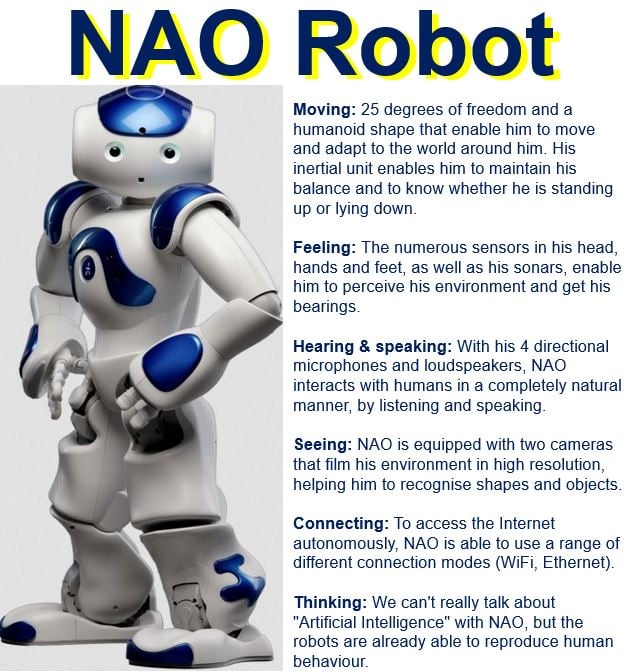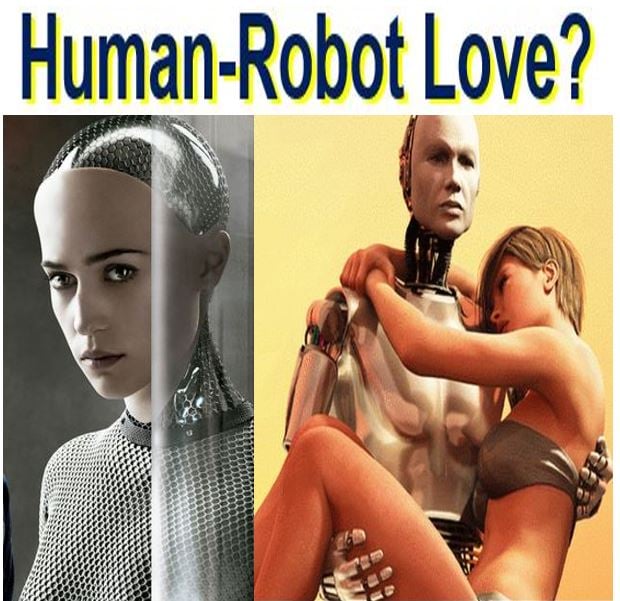Touching the private parts of robots that look like us can turn on humans, i.e. sexually arouse us, a new study has found. When the robot looks like a human, touching its buttocks and intimate areas triggers sexual arousal, say researchers from Stanford University in California, USA. N.B. The arousal is experienced by the human, not the robot.
Byron Reeves, Jamy Li, and Wendy Ju, who all work at Stanford University, are scheduled to present their findings at the 66th Annual Conference of the International Communication Association in Fukuoka, Japan (9-13 June, 2016).
In their experiments to see how humans respond to touching certain types of robots, the scientists used the Aldebaran Robotics’ NAO human-shaped robot.
 NAO is an autonomous, programmable humanoid robot developed by Aldebaran Robotics, a French robotics firm based in Paris. NAO has continually been evolving since the beginning of his adventure in 2006. Researchers used a NAO robot in their experiments. (Image: aldebaran.com)
NAO is an autonomous, programmable humanoid robot developed by Aldebaran Robotics, a French robotics firm based in Paris. NAO has continually been evolving since the beginning of his adventure in 2006. Researchers used a NAO robot in their experiments. (Image: aldebaran.com)
The trial volunteers had an Affectiva Q-Sensor fitted to the fingers of their non-dominant hand. The devices measures skin conductance, a measure of physiological arousal, and the participant’s reaction time.
Touching private parts aroused participants
When the participants were asked to touch the robots in areas that humans generally do not touch unless they have an intimate relationship, such as the buttocks or eyes, they were emotionally aroused, compared to when instructed to touch the hands, neck and more ‘accessible’ parts.
What is a robot?
Byron Reeves, a Paul C. Edwards Professor at Stanford’s Department of Communication, and colleagues also found that the volunteers were more hesitant to touch the robot’s intimate parts based on the response times.
A vast number of studies in communication have demonstrated how touch is commonly used as a social ‘glue’ between people-building relationships and eliciting and building trust.
 Imagine an ultra-advanced artificial intelligence which is designed to be 100% compatible with your personality. It is also programmed to love you no matter what happens. It is then placed in an attractive robot. Could you fall in love with it? Would it make you happier than you could possibly be with a human companion-spouse-lover?
Imagine an ultra-advanced artificial intelligence which is designed to be 100% compatible with your personality. It is also programmed to love you no matter what happens. It is then placed in an attractive robot. Could you fall in love with it? Would it make you happier than you could possibly be with a human companion-spouse-lover?
In some cultures, for example when looking at Western Europe, touching is a normal part of human interaction (Latin cultures), something Britons and other Northern Europeans do much less.
Jamy Li, a PhD. student at Stanford’s Department of Communications, said regarding how humans respond to robots:
“Our work shows that robots are a new form of media that is particularly powerful. It shows that people respond to robots in a primitive, social way. Social conventions regarding touching someone else’s private parts apply to a robot’s body parts as well. This research has implications for both robot design and theory of artificial systems.”
Are humans destined to have robot romances?
If arousal is possible with a simple machine that looks a bit like a human, how would we react to an ultra-advanced artificial intelligence placed in a super-attractive robot that has been programmed to love us? Are humans destined to fall in love with robots one day?
Will they become so ideally-tailored to each person’s individual needs and personality type that no other human could possibly compete?
Perhaps future companion-robots could help save marriages. When a human couple, who have been together for several years and fall out of love with each other, rather than split up and go through all the legal procedures and stress (for them and their offspring) that a divorce brings, plus the financial burden, there would be the option of having a robot-companion each, and still live in the same house together. Would that work?
Could a very advanced artificial intelligence use its knowledge of how touch affects humans to literally ‘seduce’ us to do what it wants? Intelligent and manipulative humans have been using that knowledge to get what they want from people for centuries.
In an Abstract ahead of their presentation, Li, Ju and Reeves wrote:
“Social robots can elicit tactile responses in human physiology, a result that signals the power of robots, and should caution mechanical and interaction designers about positive and negative effects of human-robot interactions.”
Citation: “Touching a Mechanical Body: Tactile Contact With Intimate Parts of a Human-Shaped Robot is Physiologically Arousing,” by Byron Reeves, Jamy Li and Wendy Ju and Bryon Reeves; to be presented at the 66th Annual International Communication Association Conference, Fukuoka, Japan, 9-13 June 2016.
Video – Artificial Intelligence
AI stands for Artificial Intelligence. It refers to software technology that makes robots and other machines ‘intelligent.’ In other words, it makes them mimic how we behave and think.
